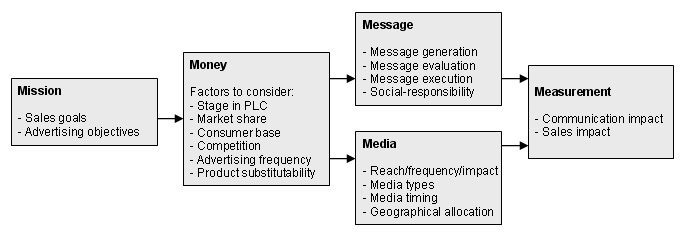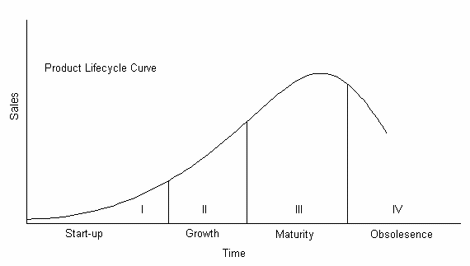Future of Advertising
Group Members
Sven Blom
Chen Li
Klaas-Jan Molendijk
Willem de Ruiter
Chaitu Satbhai
Introduction
What is a advertising? According to Wikipedia:
Generally speaking, advertising is the promotion of goods, services, companies and ideas, usually by an identified sponsor.
Research questions
For readability sake – and since these research question are only for internal use - we will not give in text references. All our references can be found on the bottom of this page.
What is advertising?
Generally speaking, advertising is any paid form of nonpersonal promotion of goods, services, companies and ideas, usually by an identified sponsor. Marketers see advertising as part of an overall promotional strategy (i.e. one of the elements of the marketing mix). Other components of the promotional mix include public relations & publicity, personal selling, direct marketing, events and sales promotion.
What are the objectives of advertising?
Advertising objectives can be classified according to whether their aim is to inform, persuade, remind or reinforce.
- Informative advertising. Aims to create brand awareness and knowledge of new products or new features of existing products.
- Persuasive advertising. Aims to create liking, preference, conviction and purchase of a good or service.
- Reminder advertising. Aims to stimulate repeat purchase of a good or service.
- Reinforcement advertising. Aims to convince current purchasers that they made the right choice.
Why is advertising necessary?
<<to be filled in>>
How does advertising fit in marketing?
<<to be filled in>>
What is the general advertising process and which parties are involved?
Organizations handle advertising in different ways. In small companies, advertising is handled by someone in the sales or marketing department, who works with an advertising agency. A large company will often set up its own department, whose manager reports to the “big boss” of marketing. The department’s job is to propose a budget, develop strategy, approve ads and so on.
Most companies use an outside agency to help create advertising campaigns and to select and purchase media. Today, advertising agencies are redefining themselves as “communication companies” that assist clients to improve their overall communications effectiveness. They do this by offering strategic and practical advice on many forms of communication.
The general process can be described with 5 major decisions, the 5 Ms.
NB: Although this is not a complete picture it gives a very good picture of how it works in general.
How can the Product Life Cycle be related to advertising? What will be the life-span accordingly? (what do I have to do with this last question?)
The figure below shows the Product Life Cycle. Each stage of a product’s life requires a different approach of advertising.
- Start-up stage. Build product awareness among early adopters and dealers.
- Growth stage. Build awareness and interest in the mass market.
- Maturity stage. Stress brand differences and benefits.
- Obsolesence stage. Reduce to level needed to retain hard-core loyals.
PART CHEN LI
PART WILLEM
Which industries advertise most? And which less?
Research did not show that there are certain industries that advertise more than others. It looks like that certain industries do prefer certain media. Movies are mostly advertised during other movies and internet businesses focus more on internet advertisement than other industries. Industries that do not deliver raw material or unfinished costumer goods and B2B do not advertise to the consumer.
What are the differences between B2C and B2B advertisement?
Although the target of the advertisement is not the same as B2C, there is no difference in the way the advertisement is set up. The way the advertisement is brought to the other business is the same. Focus on B2B advertisement besides product is also service and long term relations.
'Is advertisement mostly done by the company themselves or is it outsourced? ’
At this moment most of the MNC’s have their own advertising departure or they have an entire advertisement company fully available. Nike is a nice example how their advertisement company grew together with Nike and how both existence now rely on each other. Like the outsourcing trend of IT, also advertisement follows the trend to be outsources. While the first major outsourced location was India, now the trend moves slowly to China, Philippines, Malaysia, Singapore, South Africa and Australia. Studies show that this will increase in the future when the western knowledge of these countries improves. How differs advertising of goods from advertising of services? What are general qualities of advertisements? (e.g. pervasiveness, amplified expressiveness and impersonality)
<<<to be done later>>>
Is the role of advertisement changed in the last decades? And how? Over the years, the public perception of advertising has become very negative. It is seen as a medium that inherently promotes a lie, based on the purpose of the advertisement - to encourage the target audience to submit to a cause or a belief, and act on it to the advertising party's benefit and consequently the target's disadvantage. They are either perceived as directly lying (stating opinions or untruths directly as facts), lying by omission (usually of terms unfavorable to the customer), portraying a product or service in a light that does not reflect reality or even making up realities where their product has a new role.
Driving Forces
(to do at monday after class)
- Increasing information availebility for consumers (internet comparing)
- Increasing knowlodge of consumer (internet reviews, independend users reflection)
- Increasing populairity of media on demand
- Growing diversity of media
- More personalized adds (individualization)
- Consumer's ability to skip adds
- Growing consumer resistance to adds
Note: just some ideas, we will work on it on monday!
References
(yet incomplete)
- http://www.inc.com/magazine/20050801/future-of-advertising.html
- http://adverlab.blogspot.com/
- http://www.pcmag.com/article2/0,1895,1866501,00.asp
- http://www.economist.com/business/displaystory.cfm?story_id=2787854 (good article)
- http://advertising.about.com/od/planning/a/interactivetv.htm
- http://www.businessweek.com/magazine/content/01_13/b3725020.htm
- http://www.pcworld.com/news/article/0,aid,120065,00.asp
- http://businessweek.com/magazine/toc/06_13/B39770613futureoftech.htm
- http://www.deccanherald.com/deccanherald/jan232006/business1941292006122.asp

